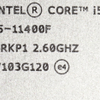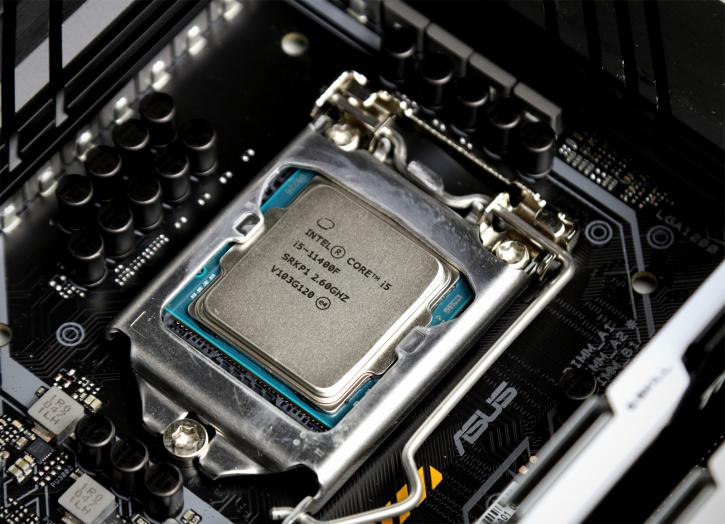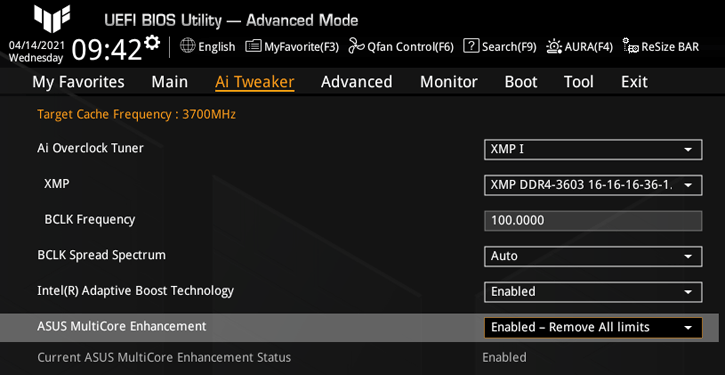An Introduction
Core i5-11400F processor reviewBelievably the best value gaming processor to date
We again descend from eight to six processor cores and twelve threads, this round with the Core i5 11400F, a processor that might be considered the most high-grade value for money in the Rocket Lake-S range from Intel with a listed price of roughly 157 USD. The current street prices list at 160/170 USD right now. And what you are going to read up in this review as that if you're out on the look for a processor for a Game PC in relation to value, this might be the one.
Yeah, Rocket Lake-S has had a rocky launch alright, energy levels and heat are all over the place. Much in my previous reviews, I like to reiterate, it ain't all bad at all. It's pretty impressive what Intel manages to pull from a 14nm baked processor, but also fights the issue that comes with that same node. Within the line of products, there are always little gems though, and the Core i5-11400F might exactly be that. At 157 USD you can purchase this six-core processor. Mind you, we tested the F model, which means the IGP (on-board graphics) has been disabled, which shaved off 25 bucks of the purchase price otherwise. So that's 26 USD per core. ANd the processor is SMT enabled as well (hyper-threading) and thus offers 12-threads. This is a non-K model, so overclocking is out of the question. But previous reviews have learned, that overclocking might be ill-advised anyway.
The Rocket-Lake-S 11th generation series processors have been the topic of much debate the past few months. Intel making a move towards PCIe Gen 4.0 (on the processor's lanes, but not mobo-chipset) and making a shift towards new Cypress Cove CPU cores (which technically are Sunny Cover cores, you know, from 10nm Tiger Lake). Yes, Intel has been unable to move towards 10nm for its fabrication process, so again this is a processor series that is fabbed on 14nm. While the performance is there, the bigger that number, the more extensive power consumption and heat will be. It's been a hell of a time and a hell of a ride for Intel. To date, they cannot meet the incredible demand for their wide portfolio of processors and chipsets. AMD is breathing down its neck for a few years now with Ryzen, and Ryzen 5000 is/was effectively the fastest IPC-based processor series with proper TDP. And as this review will prove, they still are. AMD moved towards the 7nm fabrication node completely and reaps that node's fruits; Intel has a tough time breaking away from 14nm. Initially, they wanted to move to 10nm, but that has proven impossible for various reasons. Something had to change, though, and for Intel, that had to be its architecture. For the laptop parts, there's tiger lake on 10nm, with Golden Cove CPU cores. Here's what Intel did, they took these CPU cores (which offer more IPC) and reversed engineered them back (ported if you will) towards 14nm. And that my friends are what is now called Cypress cove cores, the cores that Rocket-Lake-S series processors now use. So while they gain the generational performance increase in IPC, they still have to face the fact that they're on 14nm, which means high voltages, high (and hungry) clock frequencies, and energy efficiency getting a thing on its own.
14nm++++
- Skylake, Core 6th Gen - August 2015
- Kaby Lake, Core 7th Gen - January 2017
- Coffee Lake, Core 8th Gen - October 2017
- Coffee Lake Refresh, Core 9th Gen - October 2018
- Comet Lake, Core 10th Gen - April 2020
- Rocket Lake, Core 11th Gen - March 2021
I had to look this up and think a bit back in time to see and remember what the first 14nm product was, and that was 2015 where Intel released its Skylake architecture. The good news is, though, that RKL will be the last in that long line of 14nm products. Intel is listing the procs at 125 Watt, not bad for fast 6- and 8-core parts. However, in pale comparison, a Ryzen 9 5950X with its 16 cores is rated 105 Watts on TDP. Next to that, Intel is using multiple power states. That TDP might be 125 Watt, but the flagship Rocket-Lake-S processor has a secondary PL2 state where it can utilize 250 Watts of power for almost a minute, and motherboard manufacturers are free to tweak that timeframe even longer. It is a bit worrying perhaps, but then again, most of us don't really care too much about TDP; performance is where it's at. The generational increase for RKL brings new benefits to the eco-system and AVX512, support for 20 PCIe 4.0 lanes from the CPU, and faster memory support. The new Z590 chipset-based motherboards have native USB 3.2 Gen 2x2 (20 Gbps) and get a doubled up bandwidth link from CPU to the chipset, moving from DMI x4 to DMI x8, but still a PCIe Gen 3.0 x8 link. The flagship successor to CML, aka Comet Lake, now RKL Rocket Lake with the flagship model Core i7-11900K, has eight cores and can reach a turbo frequency of up to 5.2 GHz even 5.3 GHz with proper cooling (Velocity Thermal Boost) on selected CPU cores.
The 11th generation into Core desktop processors is running up to 8 cores, which's two down from 10th generation processors. Likely, Intel needed the transistor space on 14nm for the increase in IPC, bigger Tier1 and 2 caches, and of course, the new Xe-based integrated graphics solution. The processor socket sticks towards 1200 pins, aka LGA1200. After a BIOS update, Z490 will also be compatible with 11th Gen processors, be sure to check out compatibility with your motherboard manufacturers. Among the main features, we have HyperThreading through the entire line of Core products, so that's from Core i3 to Core i9, up to 8 cores and 16threads, and up to 5.3GHz for a limited core boost if your cooling allows the processor to do so. The new Z590 motherboards will last for Comet Lake-S (last gen) and Rocket Lake-S (11th-gen).
There are unlocked Core i5 processors as well, the best being the six-core Core i5 11600K (review) however in this review we check out the cheaper 6-core part; it has a 4.2 GHz All core turbo tied to a 65W TDP, however, it is possible to alter these power limits as PL1 and PL2 states are not considered "overclocking" by Intel, and that means you'll see a lot of varying performance on the several motherboard brands. Core i5-11400F has 6-cores/12-threads clocked at 2.60 GHz, with an up to 4.40 GHz Turbo Boost and 4.2 GHz all-core boost. This mainstream processor lacks Boost 3.0, Thermal Velocity Boost, and Adaptive Boost. Each core has a 512 KB dedicated L2 cache, and the cores share 12 MB of L3 cache.
Note: we'll do something different throughout this review. We'll test both reference setting and thus performance; as well as motherboard optimized multi-core settings. The reason we do this is that all manufacturers will offer this as default with their motherboard. And that free tweak brings in significant extra performance specifically for this processor with its low base-clock in relation to gaming. To keep things matched up, we paired this CPU with a 200 USD (more value motherboard). So you'll see two data sets, we'll analyze more in-depth in our conclusion.



